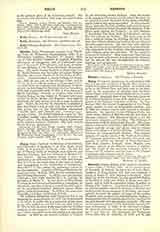

Kemp, JOHN, Cardinal, Archbishop of Canterbury, and Chancellor of England; b. at Wye, Kent, about 1380; d. at Lambeth, March 22, 1454. He was the son of Thomas Kemp of 011antigh, near Ashford, and Beatrice Lewknor, and was educated at Merton College, Oxford. Having become doctor of laws, he practiced as an ecclesiastical lawyer with such success that in 1415 he was made dean of the Court of Arches and vicar-general to the Archbishop of Canterbury. King Henry V also utilized his diplomatic talents in several embassies. Appointed Bishop of Rochester by papal provision, June 26, 1419, he was consecrated in the following December. In 1421 he was translated to Chichester, and eight months later to London, by provision of Martin V. On the death of King Henry V, whom he had served as Chancellor of Normandy, he was made a member of the new council, in which capacity he supported Cardinal Beaufort against Humphrey, Duke of Gloucester. In 1426 he was made first Chancellor and then Archbishop of York.
His political differences with Gloucester led to his resigning the chancellorship in 1432, but he continued to be active in public life as a supporter of the peace party, who wished to end the long war with France. In 1433 he was the head of the important but fruitless embassy to the congress of Arras, when a settlement was vainly attempted under the auspices of the papal legates. In 1439 he was created cardinal by Eugene IV, his title being Sancta Balbina. After the deaths of his opponent Gloucester and his friend Beaufort, he set himself to resist the power of the Duke of Suffolk, and in 1450 he was again chancellor. In this capacity he put down the Kentish rebellion, and amid the growing likelihood of civil war remained the mainstay of the king’s party against the Yorkists. In 1452 Nicholas V transferred him from York to Canterbury, giving him the pallium on September 24 The same pope made him a cardinal bishop by dividing the See of Porto from that of Santa Rufina and making Kemp bishop of the last-named diocese. His last days were agitated by the tumultuous proceedings of the London citizens, who, supported by the Yorkists, were threatening him with violence, when the end came. He lies buried in Canterbury cathedral. More statesman than bishop, he was accused with reason of neglecting his dioceses, but his private life was distinguished by wisdom, learning, and uprightness.
EDWIN BURTON

